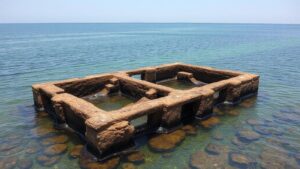The role of legends, like Agharta, in guiding tunnel system explorations.
The Role of Legends, Like Agharta, in Guiding Tunnel System Explorations
Throughout history, the interplay between myth and exploration has frequently driven human curiosity about the unknown. Legends, such as Agharta, serve not only as intriguing narratives but also provide a conceptual framework that guides real-world explorations of subterranean tunnel systems. This article delves into the history and significance of Agharta, its connections to tunnel exploration, and how such legends shape our understanding of the Earths hidden realms.
Understanding Agharta: The Myth and Its Origins
Agharta is rooted in the traditions of various ancient cultures, particularly within the lore of Asian civilizations. Often described as a mythical city located deep within the Earth, Agharta is suggested to be a realm of peace, enlightenment, and advanced technology. Its earliest mentions can be traced back to the 19th century when the term became popularized through the writings of explorers and theosophists like Helena Blavatsky and later, the French writer Louis Jacolliot.
According to these interpretations, Agharta is the capital of a vast underground civilization called Shambhala. While the exact location is shrouded in mystery, proponents of the legend often claim it lies beneath the Himalayas. This mythical geography has incited much fascination regarding subterranean passages and tunnel systems.
The Influence of Legends on Explorations
Legends like Agharta have propelled explorers to delve into the depths of Earths caves and tunnels. lore surrounding Agharta has inspired numerous expeditions aimed at discovering hidden tunnel systems and underground cities.
- In 1906, explorer John Murray ventured into the caves of the Himalayas, driven by the belief that secrets to Agharta lay beneath the surface.
- In the 1930s, a similar fervor led the Jesuit explorer Father Pierre Teilhard de Chardin to study ancient sites in Mongolia, where he believed echoes of Aghartas wisdom resided.
Such ventures often consisted of rigorous exploration methods, including mapping, geological surveys, and even speculative investigations into supposed entrances to these hidden realms.
Real-World Applications of Subterranean Exploration
The quest for Agharta may have been driven by myth, but it underscores the significance of tunnel systems in a variety of practical applications today. Here are a few examples:
- Geological Research: Modern geologists utilize underground exploration to study the Earths structure, identifying mineral resources and assessing seismic risks.
- Urban Development: Cities worldwide, from New York to Tokyo, are increasingly building extensive subway systems, which rely on intricate tunnel networks that echo the ancient myth of Agharta.
- Environmental Projects: Tunneling can play a crucial role in water management, waste disposal, and sustainable urban planning.
Statistics and Data in Tunnel System Exploration
The significance of these explorations is backed by impressive statistics. For example, the U.S. has more than 23,000 miles of underground highway tunnels, according to the Federal Highway Administration. Also, worldwide investment in tunneling technologies was projected to reach approximately $20 billion annually by 2025, indicating a robust interest in this hidden infrastructure.
Addressing Concerns and Misconceptions
While the search for legendary realms like Agharta may seem fanciful, it is vital to distinguish between mythological storytelling and scientific exploration. Many researchers and explorers advocate for a grounded approach, emphasizing that while legends can ignite imagination, concrete data and proven methodologies are essential for responsible exploration.
Actionable Takeaways
Legends like Agharta highlight the human spirits insatiable quest for discovery and understanding. Here are some actionable takeaways for future explorations:
- Integrate folklore and local legends into exploration plans to respect cultural significance and gain insights into human history.
- Use advanced technologies, such as ground-penetrating radar (GPR), to safely explore underground landscapes while adhering to scientific rigor.
- Encourage interdisciplinary collaboration between geologists, historians, and anthropologists to create a holistic approach to tunnel exploration.
To wrap up, the role of legends like Agharta in guiding tunnel system explorations is a fascinating fusion of myth and reality. While these stories may not provide literal maps to hidden cities, they embody the adventurous spirit that continues to propel humanity in its quest to understand the enigmatic world beneath our feet.



